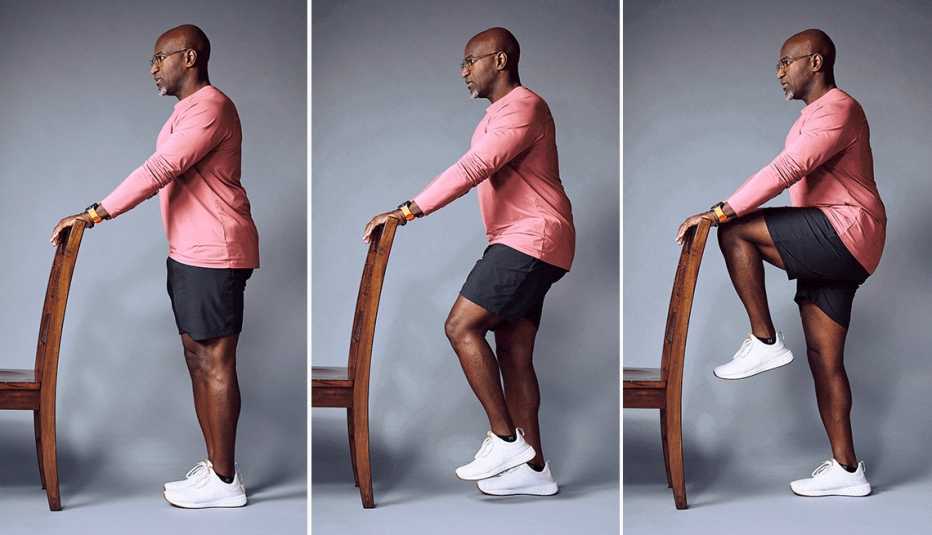Staying Fit


Though you know you need to exercise, you may feel like you don’t have the resolve, interest or time to get physically fit. You aren’t alone. Almost half of those 50 and older feel the same way, according to an AARP survey.
But building muscle and getting the physical activity that health experts say all adults need is easier than you may have thought. You can break movement into short bursts that health experts call exercise snacks, and still get many of the benefits of exercising and lifting weights, without leaving your home or buying gym equipment.


AARP Membership— $12 for your first year when you sign up for Automatic Renewal
Get instant access to members-only products and hundreds of discounts, a free second membership, and a subscription to AARP the Magazine.
“When experts say you should be getting 150 minutes of exercise a week and strength training two times per week, I think that can [sound] scary,” says Katie Wadland, a board certified geriatric clinical specialist and owner of Healthy Aging Physical Therapy based in Wakefield, Mass. “So, break it down.”
A few minutes, real results
The benefit of exercise snacks has emerged from years of research on short, intense exercises. In 2022, researchers in the United Kingdom published one of the largest studies to date in the journal Nature Medicine on middle-aged adults, showing how brief bouts of vigorous exercise can improve cardiovascular health.
The study concluded that people between the ages of 40 and 69 who engaged in spurts of movement for at least one to two minutes, three times a day, significantly reduced the risk of death from heart disease or cancer, compared with those who weren’t physically active at all.
Let’s Play Pickleball!
Become a part of the country’s fastest growing sport. Learn the rules, tips for playing and ways to win. Plus, how to warm up, what to wear and where to play.
Another recent study looked at how short, intensive exercise snacks might help to offset muscle loss during aging. Oliver Perkin, a University of Bath postdoctoral researcher in exercise physiology, led the study of healthy but nonexercising adults and the impact of getting up and down from a chair for at least one minute, twice a day, over four weeks.
“We saw some pretty encouraging results in terms of increase in muscle size and strength in older adults,” he says of study participants. “We think the weight of the body on the person’s legs was enough to build strength.”
Building muscle
With aging, the body’s processing of nutrients begins to slow, making it harder to build muscle tissue. On average, adults lose about 30 percent of their muscle power between the ages of 50 and 70. Inactivity can hasten that muscle loss. Scientists say the brief bouts of activity encourage muscle fibers to grow and improves the efficiency of how muscles use amino acids needed to repair and restore muscle mass.
“We think, over time, activity snacks could delay the loss of muscle mass that occurs with aging,” says Daniel Moore, associate professor of muscle physiology at the University of Toronto, who is currently leading a study on activity snacks and older adults.















































































More on Health
The #1 Exercise to Do as You Get Older
If you have time for only one exercise, fitness experts say, try this
Staying Fit
Want to get fit? Get inspired with these workout routines.7 Reasons Why Strength Training Is Key to a Long Life
In just one hour a week, you can change your health and increase your longevityTry These Tips for Living a Healthier Life
Small changes can add up to big mental and physical results
Recommended for You